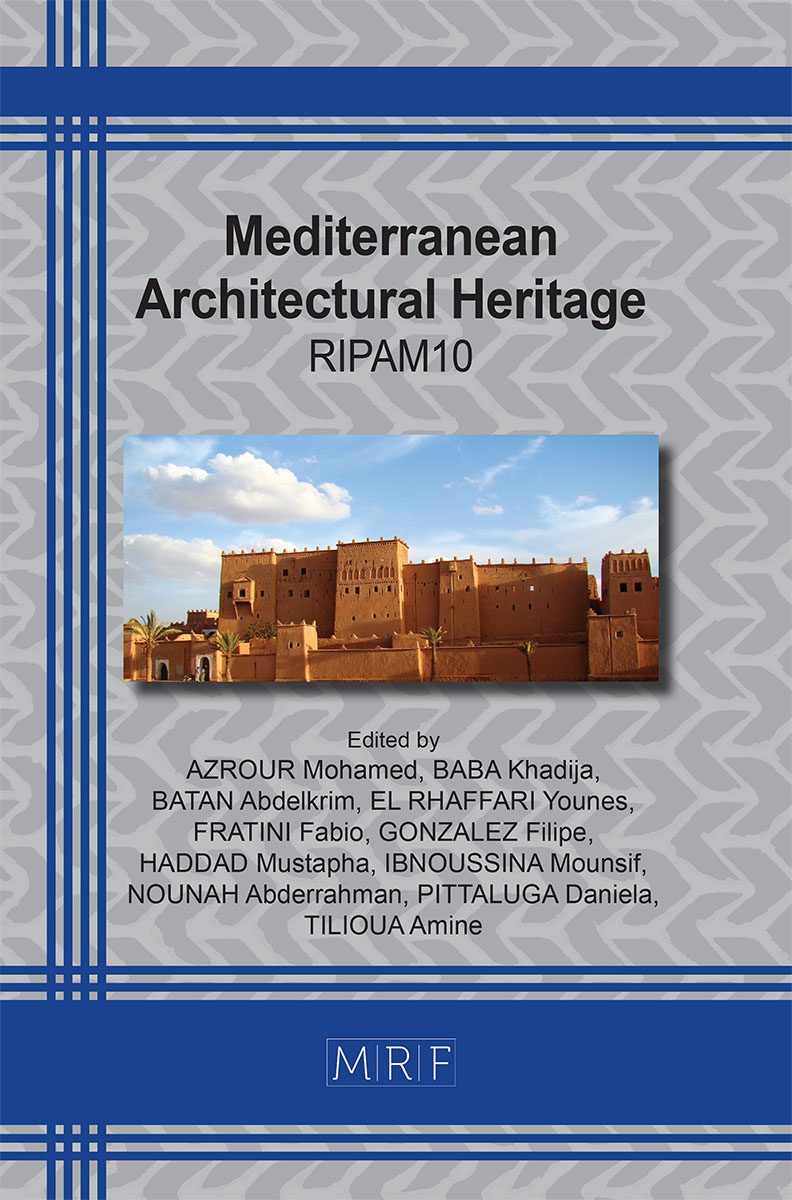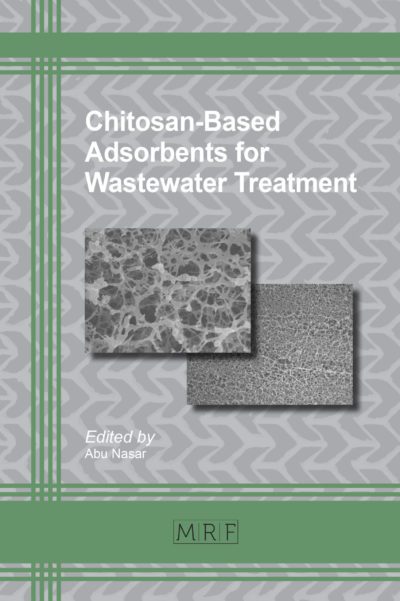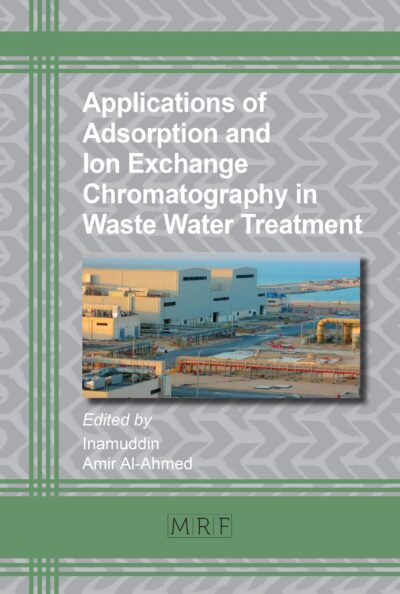Insight on the Natural Moroccan Clay Valorization for Malachite Green Adsorption: Kinetic and Isotherm Studies
Hassan OUALLAL, Mohammed CHRACHMY, Najia EL HAMZAOUI, Mahdi LECHHEB, Rajae GHIBATE, Houssam EL-MARJAOUI, Mohamed AZROUR
download PDFAbstract. This work investigates the potential of Natural Moroccan Clay (NMC) sourced from the Draa-Tafilalet region for removing malachite green from aqueous media through adsorption. X-ray diffraction (XRD) and scanning electron microscopy combined with energy-dispersive X-ray microanalysis (SEM/EDX) were used to characterize the clay. Malachite green (MG) was subjected to batch adsorption experiments, and a kinetic study was carried out at three concentrations (5, 50, and 100 mg/L). The results showed that adsorption is typically fast for all three concentrations and that the adsorbed amount rises with time and dye concentration. Equilibrium is reached within just 40 minutes. The kinetics adsorption at varying MG concentrations were modeled using non-linear and linear forms of pseudo-first order and pseudo-second order and with intraparticle diffusion models. The non-linear form of the pseudo-second-order model was found to be best suited to describing this adsorption process. The isotherm was studied using two models: Freundlich and Langmuir. According to the error functions analysis, the Langmuir model is well suited for equilibrium data fitting. Investigated clay attained an adsorption capacity of 214 mg/g. SEM/EDX characterization of NMC before and after adsorption confirms the malachite green adsorption on the NMC surface. These results illustrate the effectiveness of the investigated clay as a cost-effective adsorbent.
Keywords
Natural Clay, Adsorption, Malachite Green, Kinetic Modeling, Isotherm Study
Published online 3/15/2024, 11 pages
Copyright © 2024 by the author(s)
Published under license by Materials Research Forum LLC., Millersville PA, USA
Citation: Hassan OUALLAL, Mohammed CHRACHMY, Najia EL HAMZAOUI, Mahdi LECHHEB, Rajae GHIBATE, Houssam EL-MARJAOUI, Mohamed AZROUR, Insight on the Natural Moroccan Clay Valorization for Malachite Green Adsorption: Kinetic and Isotherm Studies, Materials Research Proceedings, Vol. 40, pp 273-283, 2024
DOI: https://doi.org/10.21741/9781644903117-29
The article was published as article 29 of the book Mediterranean Architectural Heritage
![]() Content from this work may be used under the terms of the Creative Commons Attribution 3.0 license. Any further distribution of this work must maintain attribution to the author(s) and the title of the work, journal citation and DOI.
Content from this work may be used under the terms of the Creative Commons Attribution 3.0 license. Any further distribution of this work must maintain attribution to the author(s) and the title of the work, journal citation and DOI.
References
[1] X. Jia, J. Li, E. Wang, Lighting‐Up of the Dye Malachite Green with Mercury(II)–DNA and Its Application for Fluorescence Turn‐Off Detection of Cysteine and Glutathione, Chem. Eur. J. 18 (2012) 13494–13500. https://doi.org/10.1002/chem.201103768
[2] H. Worku, Rethinking urban water management in Addis Ababa in the face of climate change: An urgent need to transform from traditional to sustainable system, Environmental Quality Mgmt. 27 (2017) 103–119. https://doi.org/10.1002/tqem.21512
[3] M. Amin, A. Khodabakhshi, Determination of malachite green in trout tissue and effluent water from fish farms, Int J Env Health Eng. 1 (2012) 10. https://doi.org/10.4103/2277-9183.94394
[4] J.A. Bañuelos, O. García-Rodríguez, A. El-Ghenymy, F.J. Rodríguez-Valadez, L.A. Godínez, E. Brillas, Advanced oxidation treatment of malachite green dye using a low cost carbon-felt air-diffusion cathode, Journal of Environmental Chemical Engineering. 4 (2016) 2066–2075. https://doi.org/10.1016/j.jece.2016.03.012
[5] P.O. Oladoye, T.O. Ajiboye, W.C. Wanyonyi, E.O. Omotola, M.E. Oladipo, Insights into remediation technology for malachite green wastewater treatment, Water Science and Engineering. 16 (2023) 261–270. https://doi.org/10.1016/j.wse.2023.03.002
[6] M.T.M. Hussien Hamad, Optimization study of the adsorption of malachite green removal by MgO nano-composite, nano-bentonite and fungal immobilization on active carbon using response surface methodology and kinetic study, Environ Sci Eur. 35 (2023) 26. https://doi.org/10.1186/s12302-023-00728-1
[7] T. Zhao, S. Xu, F. Hao, Differential adsorption of clay minerals: Implications for organic matter enrichment, Earth Sci Rev . 246 (2023) 104598. https://doi.org/10.1016/j.earscirev.2023.104598
[8] H. Ouallal, Y. Dehmani, H. Moussout, L. Messaoudi, M. Azrour, Kinetic, isotherm and mechanism investigations of the removal of phenols from water by raw and calcined clays, Heliyon. 5 (2019) e01616. https://doi.org/10.1016/j.heliyon.2019.e01616
[9] H. Moussout, H. Ahlafi, M. Aazza, H. Maghat, Critical of linear and nonlinear equations of pseudo-first order and pseudo-second order kinetic models, Karbala International Journal of Modern Science. 4 (2018) 244–254. https://doi.org/10.1016/j.kijoms.2018.04.001
[10] R. Ghibate, O. Senhaji, R. Taouil, Kinetic and thermodynamic approaches on Rhodamine B adsorption onto pomegranate peel, CSC EE. 3 (2021) 100078. https://doi.org/10.1016/j.cscee.2020.100078
[11] M. Aazza, H. Ahlafi, H. Moussout, H. Maghat, Adsorption of metha-nitrophenol onto alumina and HDTMA modified alumina: Kinetic, isotherm and mechanism investigations, J. Mol. Liq. 268 (2018) 587–597. https://doi.org/10.1016/j.molliq.2018.07.095
[12] H.N. Tran, Y.-F. Wang, S.-J. You, H.-P. Chao, Insights into the mechanism of cationic dye adsorption on activated charcoal: The importance of π–π interactions, PSEP 107 (2017) 168–180. https://doi.org/10.1016/j.psep.2017.02.010
[13] S. Iaich, Y. Miyah, F. Elazhar, S. Lagdali, M. El-Habacha, Low-cost ceramic microfiltration membranes made from Moroccan clay for domestic wastewater and Congo Red dye treatment, DWT. 235 (2021) 251–271. https://doi.org/10.5004/dwt.2021.27618
[14] M.E. Ouardi, L. Saadi, M. Waqif, H. Chehouani, I. Mrani, M. Anoua, A. Noubhani, Characterization of the bouchane phosphate ( Morocco) and study of the elements of the main control elements of its calcination, Phys. Chem. News (2010).
[15] H. Ouallal, M. Azrour, M. Messaoudi, H. Moussout, L. Messaoudi, N. Tijani, Incorporation effect of olive pomace on the properties of tubular membranes, JECE . 8 (2020) 103668. https://doi.org/10.1016/j.jece.2020.103668
[16] P.S. Nayak, B.K. Singh, Instrumental characterization of clay by XRF, XRD and FTIR, Bull Mater Sci. 30 (2007) 235–238. https://doi.org/10.1007/s12034-007-0042-5
[17] M. Abewaa, A. Mengistu, T. Takele, J. Fito, T. Nkambule, Adsorptive removal of malachite green dye from aqueous solution using Rumex abyssinicus derived activated carbon, Sci Rep. 13 (2023) 14701. https://doi.org/10.1038/s41598-023-41957-x
[18] N.S. Randhawa, N.N. Das, R.K. Jana, Adsorptive remediation of Cu(II) and Cd(II) contaminated water using manganese nodule leaching residue, Desalination and Water Treatment. 52 (2014) 4197–4211. https://doi.org/10.1080/19443994.2013.801324
[19] P. Saha, S. Chowdhury, S. Gupta, I. Kumar, Insight into adsorption equilibrium, kinetics and thermodynamics of Malachite Green onto clayey soil of Indian origin, Chem. Eng. J, 165 (2010) 874–882. https://doi.org/10.1016/j.cej.2010.10.048
[20] K. Kalpana, S. Arivoli, K. Veeravelan, Activated Carbon Merremia emarginata Adsorption Capacities of Low-cost Adsorbent for Removal of Methylene Blue, Eco. Env. & Cons,. 28 (2022) S425–S430. https://doi.org/10.53550/EEC.2022.v28i08s.064














